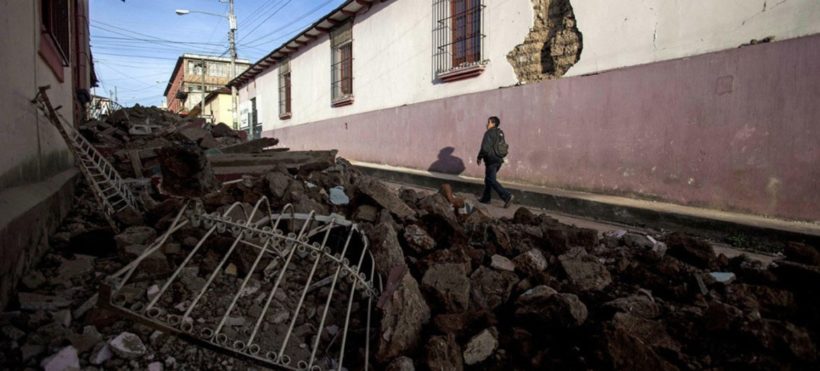It was 3 a.m. on February 4, 1976, when I was awakened by the first violent tremor. Something told me it wasn’t one of those tremors that pass without consequence; the sensation suddenly cleared my head. My 7-year-old daughter was sleeping in the next room, with her bed next to a huge floor-to-ceiling glass window; my first thought was to run to get her out immediately. I tried to enter her bedroom but the floor was shaking so badly that I couldn’t move forward. I was never so scared. I only remember finally getting out with her without rolling down the stairs and reaching the street in uncertainty and panic.
The adobe wall surrounding the neighbouring garden collapsed with the second aftershock, invading the air with a cloud of yellowish dust that hung for a long time, turning the space into a nightmare scenario. Little did we imagine in those first moments the extent of the tragedy that would plunge Guatemala into deep mourning for a long time to come. There were thousands of victims and more than a million families lost their homes in one of the worst catastrophes on the continent.
Forty-six years have passed since then, and every time a similar event occurs somewhere on this continent, which is perched on an active network of major geological faults and dotted with equally active volcanoes, it is hard to understand why, in the face of such a host of natural hazards, avoidable tragedies still occur. It is when we are obliged to doubt the ability of those in power to direct public policies in countries so vulnerable to natural events and the effects of climate change, given the criminal absence of controls and prevention measures, for which resources are scrimped and skimped every year. This is a stark and timely reality and demonstrates the general lack of attention to the importance of life and the establishment of norms to protect it.
Even though the threat of a catastrophe is latent in most of our countries, there is equally little information on prevention measures in schools, colleges, institutions and businesses, a lack of signage in public and private buildings, and reasonable doubt as to whether they were built in full compliance with building codes and standards. How many cinemas, restaurants, discotheques and shopping centres have warning systems or accessible and well identified emergency exits? Is there a national risk map, used as a tool for urban or road planning? Are the authorities aware of the need to strengthen relief institutions?
I remember the devastating earthquake in Guatemala as if it were yesterday. I see myself sitting in the gutter in front of the house where I lived, fighting the early morning cold with a bottle of rum and the constant fear of devastation that, given the precarious conditions of most of the population, would be Dantesque.
The dynamic nature of our continent is unforgiving. Aware that we live in an unstable territory, it is imperative and urgent to establish the institutionalisation of modern prevention systems, to educate the population on safety behaviour and procedures and, above all, to monitor the actions of the authorities in terms of respecting construction and urban planning regulations. Life comes first.










